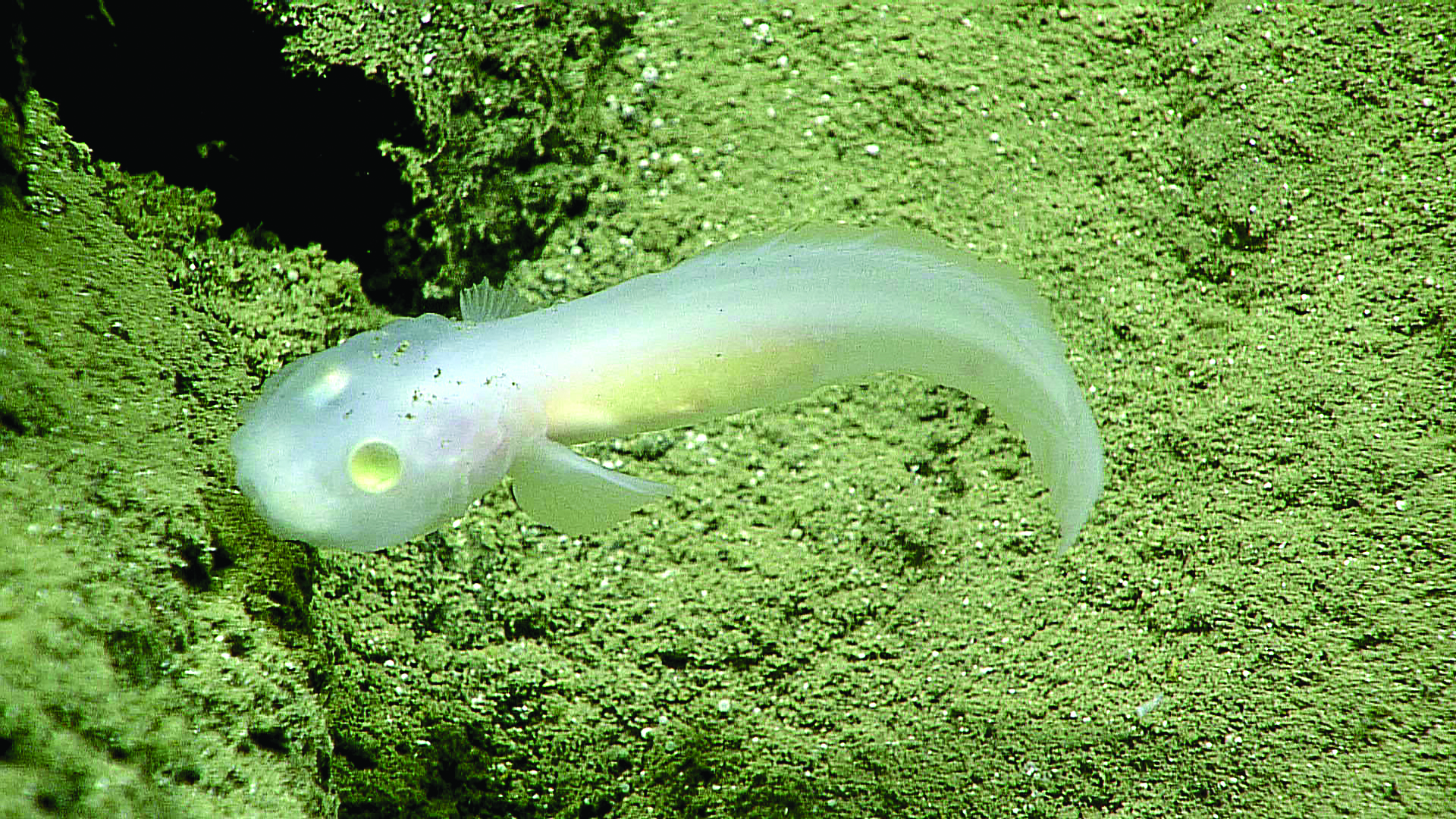Two FAU scientists played leadership roles aboard Okeanos Explorer, a research ship surveying little known areas in and around the Marianas Trench Marine National Monument and the Northern Marianas Islands. This expedition provided a window into the habitats of the western Pacific Ocean – at the sea’s deepest depths.
The National Oceanic and Atmospheric Administration (NOAA) vessel collected baseline data and offered insights into the deepwater environment home to coral, sponges, fish, hydrothermal vents, mud volcanoes and more.“Exploring the Mariana Trench — the deepest place on Earth — has been on my ‘bucket list’ for decades,” said Shirley Pomponi, Ph.D., executive director of FAU’s Cooperative Institute for Ocean Exploration, Research and Technology. She served as the biology science lead on the cruise’s third and final leg. “Sharing the excitement of exploration and discovery in real time with more than one hundred scientists and students, and thousands of others who logged on to NOAA’s Ocean Explorer website, was thrilling,” she said. “I got to see biology and geology that I had only read about. Each day, I learned something new.”
Scientists and students back at Harbor Branch participated in the expedition from its Exploration Command Center, one of only a handful in the nation. High-definition cameras captured video imagery from the ocean floor, transmitting it in real-time via satellite from the ship back to the command center.
Expedition Team
National Oceanic and Atmospheric Agency Mariana Trench expedition science team co-lead, Shirley Pomponi, Ph.D., discusses the upcoming mission during a ship tour for local stakeholders and resource managers in Guam.
Photos courtesy of NOAA Office of Ocean Exploration and Research
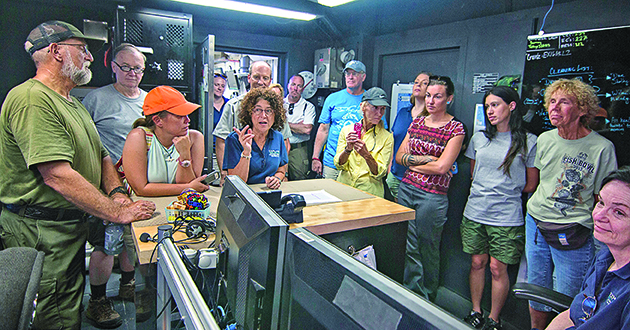
Bubblegum Coral
Bubblegum coral with unidentified green filaments. The science team wondered if the green filaments were algae snagged on the coral as they drifted down; generally, plants are not found at these depths due to the lack of light.
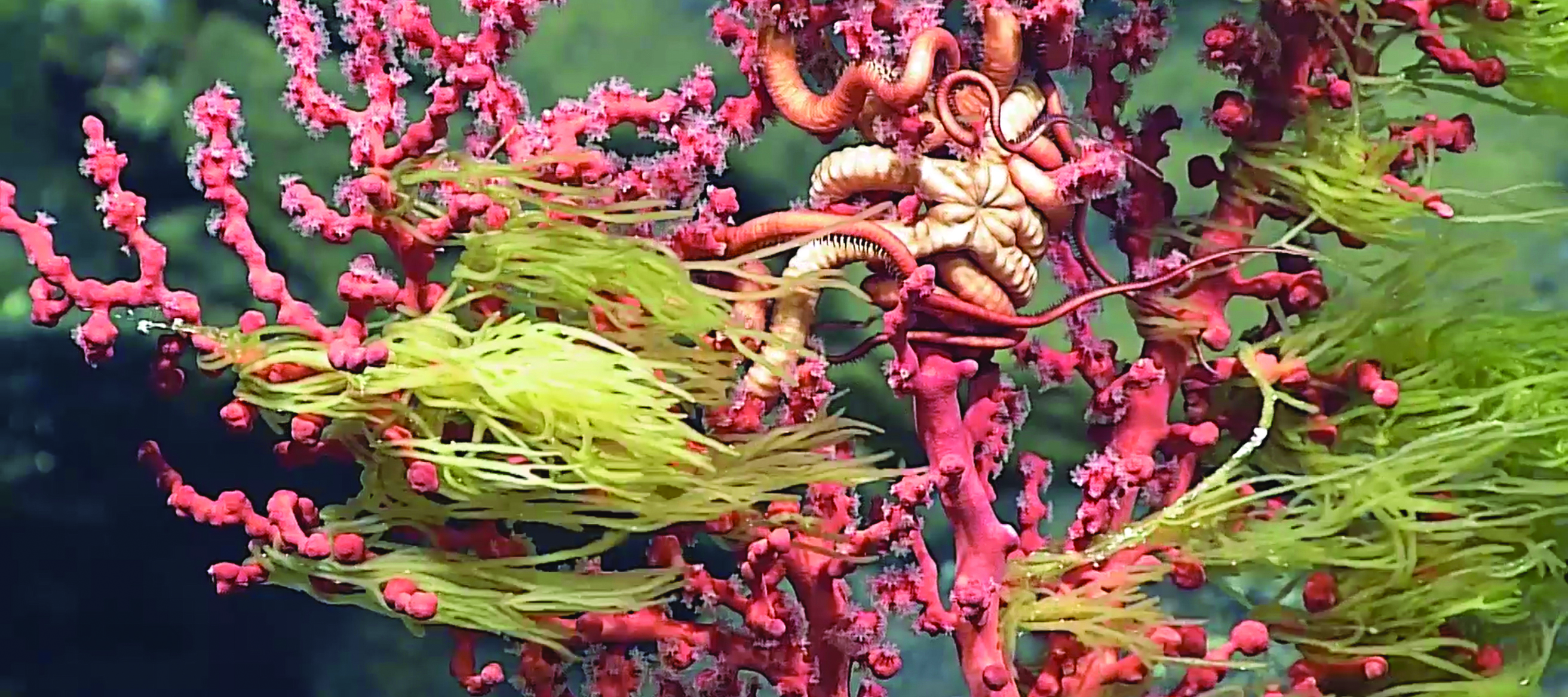
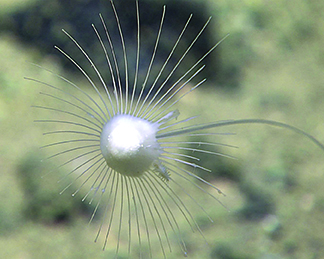
Carnivorous Sponge
This carnivorous sponge was one of many observed during the expedition. If you look closely, you can see a polychaete worm that has gotten trapped on the Velcro-like surface of the sponge. Pomponi’s research expertise focuses on marine biotechnology,including sponge systematics.
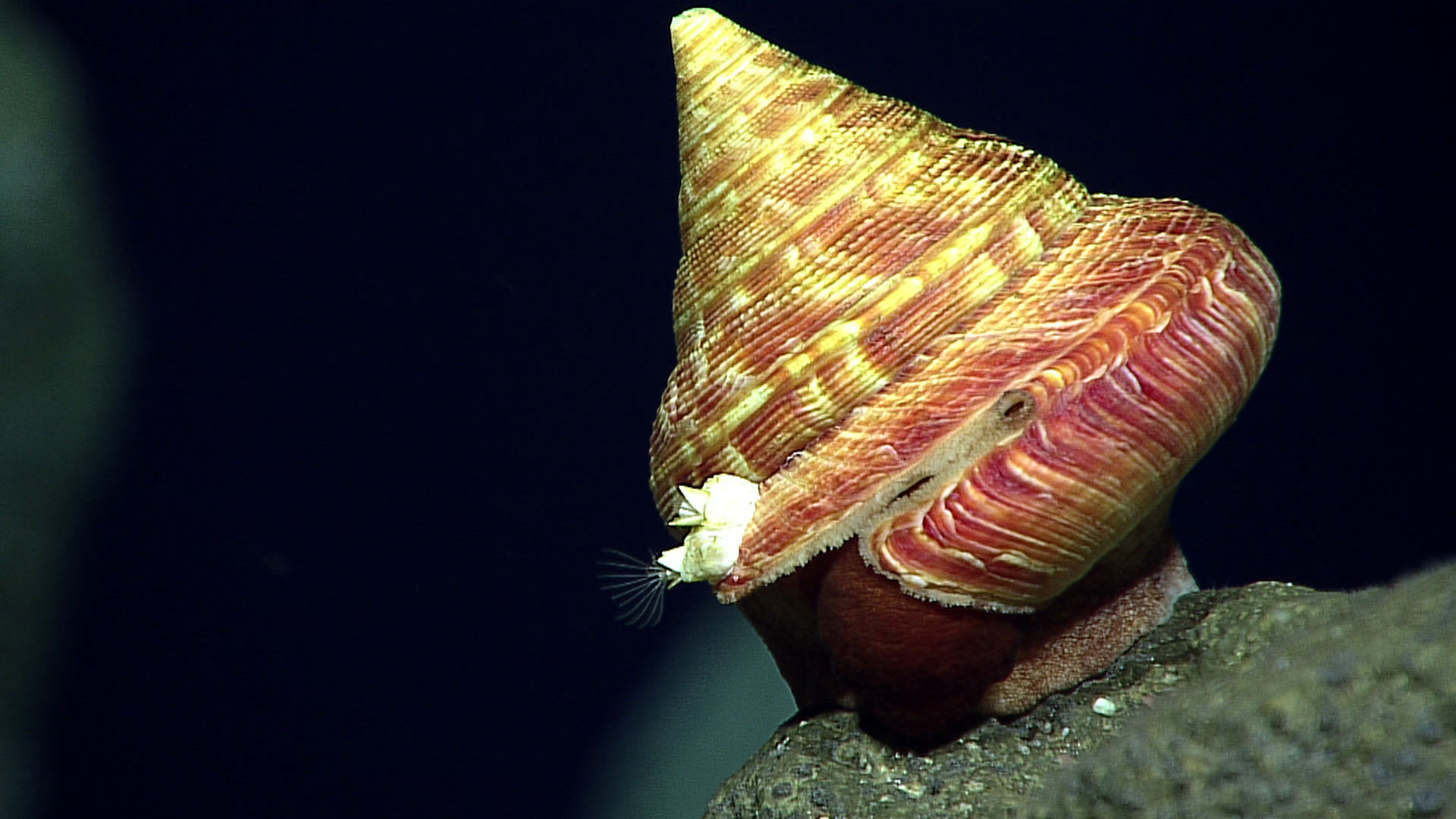
Slit Shell Snail
An exciting discovery during the expedition’s dive at Pagan – this slit shell snail was a new observation for the Marianas and likely a new species.
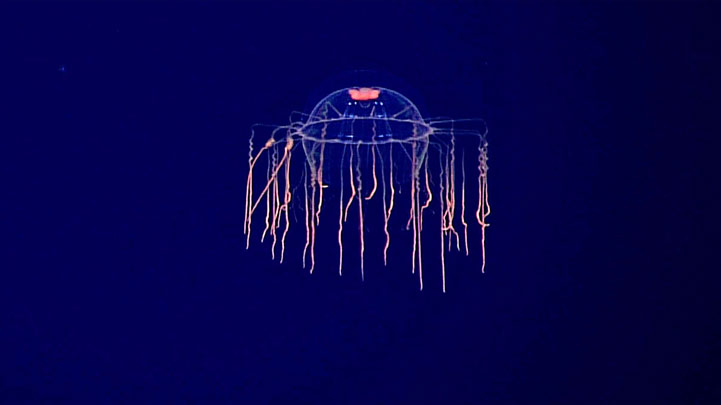
Hydromedusa
This deep-sea hydromedusa was documented during the expedition’s midwater transects at 800 meters over a newly discovered petit-spot volcano. A petit-spot volcano is one that occurs outside of a tectonic plate boundary, where most volcanoes occur.
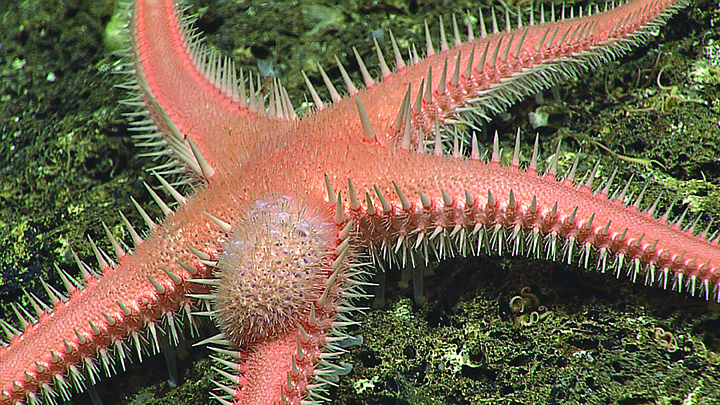
Deep-water sea star
A deep-water sea star that has been infected by what is most likely a parasitic barnacle.
Deep Discoverer
The remotely operated vehicle Deep Discoverer surveys a 14-meter tall hydrothermal chimney.
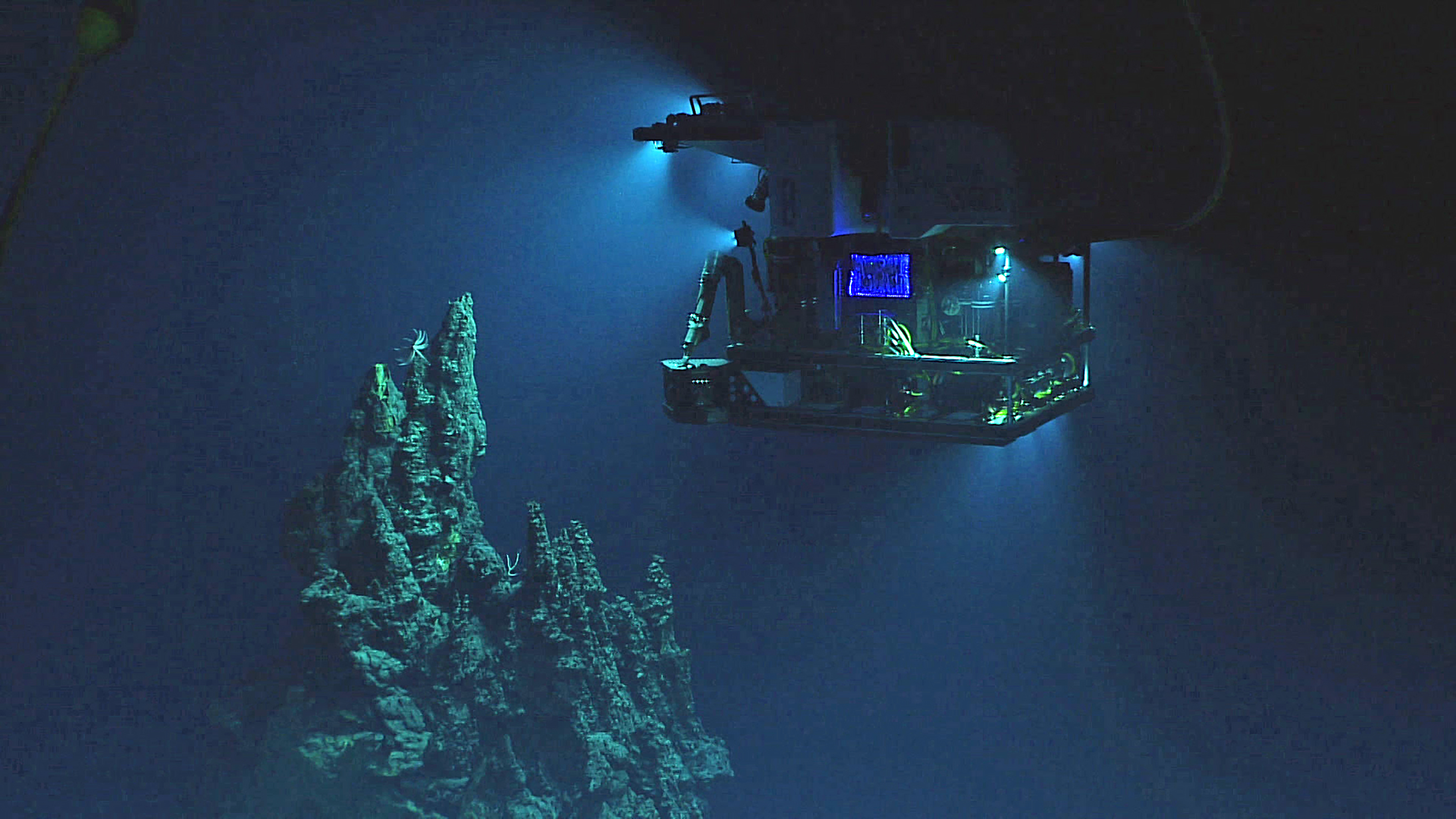
If you would like more information, please contact us at dorcommunications@fau.edu.
